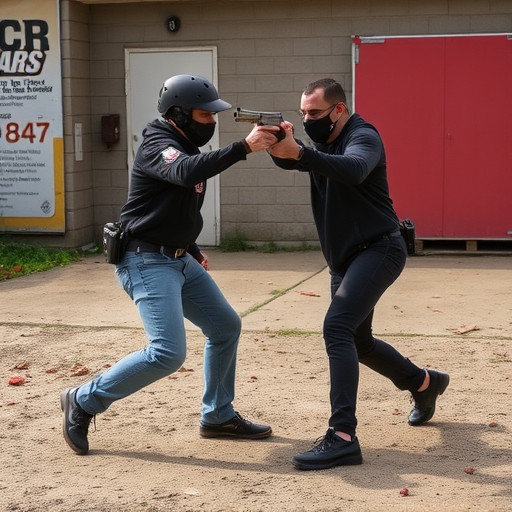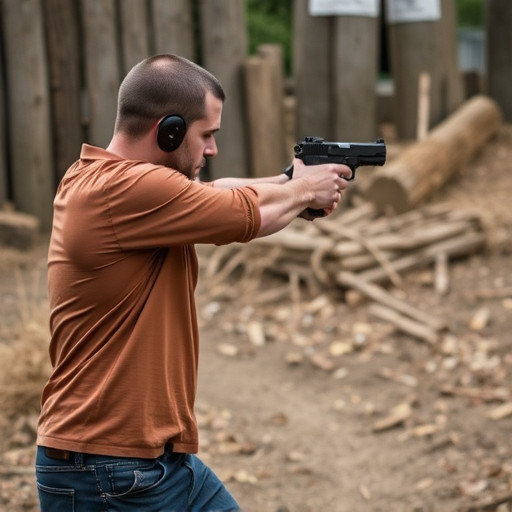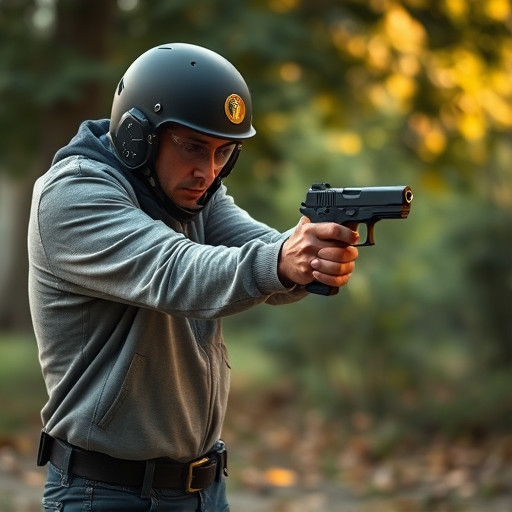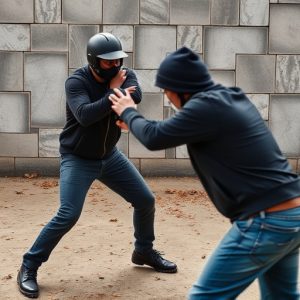Optimize Stun Gun Effectiveness: Understanding Electrode Spacing
TL;DR: When buying stun guns, electrode spacing is a critical factor influencing performance. Proper…….
TL;DR: When buying stun guns, electrode spacing is a critical factor influencing performance. Proper spacing ensures optimal current flow for maximum impact and effectiveness in self-defense scenarios. Consider design and shape for strategic alignment, with dual/triple electrodes offering enhanced versatility. Distinguish between stun guns (lower voltage, portable) and ESWs (higher voltage, robust) based on your personal safety needs. Always prioritize safety and efficacy when evaluating what to look for in a stun gun.
“Uncover the secrets behind stun gun effectiveness with a focus on electrode spacing. This comprehensive guide explores the science behind non-lethal self-defense tools, delving into how electrode placement influences stun gun success rates.
We demystify the concept, highlighting why electrode spacing is crucial for safe and efficient immobilization. Learn about key factors to consider when evaluating stun guns and discover common configurations, empowering you with knowledge to make informed decisions about what to look for when buying stun guns.”
- Understanding Stun Gun Electrode Spacing: The Basic Concept
- Why Electrode Spacing Matters in Stun Guns
- Key Factors to Consider When Evaluating Electrode Placement
- Common Stun Gun Electrode Configurations and Their Effectiveness
- What to Avoid: Red Flags in Stun Gun Design and Buying Tips
Understanding Stun Gun Electrode Spacing: The Basic Concept

When considering what to look for when buying stun guns, understanding electrode spacing is a crucial aspect often overlooked but significantly impacts performance. Electrode spacing refers to the distance between the two metal prongs or electrodes on a stun gun’s probe. The effectiveness of a stun gun largely depends on this simple yet vital concept.
The basic idea is that proper electrode spacing ensures optimal electrical current flow from the stun gun into the target, delivering a powerful and effective shock. If the electrodes are too close together, the current may not disperse evenly, potentially reducing the stun’s impact. Conversely, if they’re spaced too far apart, it can lead to inefficiency or even failure to discharge. Therefore, when shopping for stun guns, examining and understanding electrode spacing is essential for ensuring the device lives up to its safety and protective capabilities.
Why Electrode Spacing Matters in Stun Guns

In the world of personal safety devices, stun guns are a popular choice for those seeking non-lethal self-defense options. When considering what to look for when buying stun guns, electrode spacing plays a crucial role in their effectiveness. The placement and distance between electrodes directly impact the current’s ability to disrupt an assailant’s nervous system.
Proper electrode spacing ensures that a stun gun delivers a powerful electric shock by creating a continuous electrical path to the target. This means the current can flow freely, providing maximum muscle relaxation and temporary incapacitation. In contrast, poor electrode placement or spacing may result in reduced effectiveness or even a less-than-desired impact, leaving users at risk. Therefore, understanding and considering electrode spacing is essential for buying stun guns that will serve their purpose in real-world situations.
Key Factors to Consider When Evaluating Electrode Placement

When evaluating electrode placement for a stun gun, several key factors come into play. Firstly, consider the overall design and shape of the device. Stun guns vary in size and form factor, so ensuring the electrodes are strategically placed according to the device’s design is crucial for optimal effectiveness. For instance, some stun guns have pronged or plate-like electrodes that require proper alignment to maximize shock delivery.
Additionally, look out for features like electrode spacing and surface area contact. The distance between the electrodes and their overall size determine the intensity of the electric current delivered. Closer spacing generally results in a more concentrated shock, while wider spacing might offer a slightly less intense but broader area of impact. What to look for when buying stun guns includes these details, as they significantly influence both safety and efficacy.
Common Stun Gun Electrode Configurations and Their Effectiveness

When considering what to look for when buying stun guns, understanding electrode spacing is paramount. Common configurations range from single-point to dual- or even triple-electrode setups. Single-electrode designs are straightforward but less effective, often requiring direct contact with the target, which can be challenging in dynamic situations.
Dual and triple-electrode stun guns offer enhanced versatility and impact. These configurations allow for more control and increased likelihood of incapacitation by delivering multiple simultaneous jolts. Look for models that feature strategically placed electrodes to ensure maximum effectiveness, particularly in hard-to-reach or larger areas. This consideration is key when evaluating stun gun safety and performance.
What to Avoid: Red Flags in Stun Gun Design and Buying Tips

When considering what to look for when buying stun guns, it’s crucial to avoid several red flags in their design. One critical aspect is electrode spacing—a vital component that determines the device’s effectiveness. Poorly designed or widely spaced electrodes can significantly reduce the stun gun’s impact. This is because the electric current needs to disrupt muscle control, and close proximity between electrodes ensures a more concentrated and powerful discharge.
Another buying tip involves understanding the difference between a stun gun and an electroshock weapon (ESW). While both use electricity, ESWs are designed for law enforcement with more robust construction and higher voltage, ensuring better effectiveness during intense situations. Conversely, stun guns often have lighter builds and lower voltage, making them easier to carry but potentially less impactful. Therefore, understanding these differences is essential when determining what to look for in a stun gun that aligns with your personal safety needs.
When considering what to look for when buying stun guns, understanding electrode spacing is crucial. This factor significantly impacts the weapon’s effectiveness, with optimal configurations delivering powerful stun effects while minimizing risks. By evaluating key factors and being aware of common red flags in design, users can make informed decisions, ensuring they acquire a safe and reliable stun gun. Staying informed about electrode placement allows for navigating the market to find the best fit for personal protection needs.


